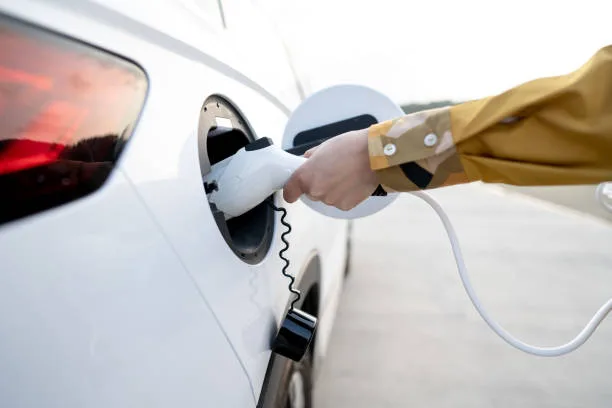Electric Vehicles | 2023
EV Vehicles
As it is observed that the no of vehicles are increasing day by days . As these vehicles consume petroleum products such as petrol diesel as well as as gases, due to this consumption of petroleum products a huge quantity of poisonous gases spread in the environment which is dangerous for human as well as living things.

From a long time, scientist from various countries such as UK, USA, France chaina etc. research on the other options of petroleum products to run vehicles . Scientist found electric vehicles will be one of the best option.
France and Great Britain were early innovators in developing superior electric vehicles. After 1891, when A. L. Ryker built a three-wheeled electric car and William Morrison built a six-passenger wagon’s. Later interest in the electric car increased in the United States .
The best years for electric automobiles in America were 1899 and 1900, when they outsold all other car types (steel, petrol and diesel). One illustration was the $2000 1902 Phaeton produced by the Chicago-based Woods Motor Vehicle Company, which had a range of 18 miles and a top speed of 14 mph. The majority of driving at the time was for small distances because there weren’t many good roads connecting communities. Electric vehicles could travel as far as steam-powered vehicles and required less time to start up. Gas engines were noisy and smelly.
These vehicles lack any sort of internal combustion engine and are exclusively propelled by electric motors, which derive their power from sources other than internal combustion engines.
Battery Life

A large battery inside a battery-electric vehicle (BEV) stores electrical energy. The batteries receive their power from an electric source outside the automobile, often an outlet similar to those found in a home. It is the most prevalent type of electric vehicle in use today. Many governments all around the world are promoting the installation of charging stations, which include a socket that can charge the majority of plug-in car models, in public areas. Nissan, which manufactures the Leaf, and Mitsubishi Motors, which create the i-miEV, are two companies that produce BEVs. Fast-charging BEVs, like the sports car Roadster and more recently the Model S, are made famous by an American firm called Tesla.
There are plenty further electric vehicle varieties. A tram bus, often known as a trackless tram, is powered by overhead electric lines. A railway electrification system provides power to numerous trains. A technique known as “mag-lev” (magnetic levitation) is used on a few high-speed rail lines to move the train using powerful magnets in the track. There are electric tricycles (trikes) like the Corbin Motors Sparrow, which was also featured in the Austin Powers film Goldmember, as well as electric bicycles, motorbikes, and other vehicles.
However, in recent years, there have been buses and trains that employ fuel cells or batteries to store their power. Wires are not required for these kinds of vehicles.
Both benefits and drawbacks
Advantages:

The UK is considering outlawing the sale of diesel, petrol, and hybrid vehicles by 2035 since they are extremely silent, smell bad, and emit no pollution from exhaust gases. Even indoors, in mines and tunnels, they can be used. Petroleum is a finite resource that will run out eventually and is getting more expensive. A battery-electric car will emit fewer greenhouse gases if the electricity it uses is generated by a renewable energy source, such as a windmill, solar panel, geothermal energy, or hydroelectricity.
Operating costs are lower for electric cars. In comparison to a full tank of petrol, an electric car can be fully charged for no more than $20. Additionally, maintenance is less expensive (e.g., no check engine light, no oil change).
Electric bikes can have advantages and benefits. It is advised against purchasing a car if your daily trip to work or the store is short.

They are much less expensive to buy and operate. Deals and savings are another unique benefit of electric bikes.[In order to draw customers and differentiate themselves from other stores, many retailers provide discounts. Customer advantage is always a result of competition.
No matter where your electricity comes from, electric automobiles leave a smaller carbon footprint than gasoline-powered vehicles.
Electric cars are more environmentally friendly over the course of their whole lives.
Electric vehicles can be charged while you’re at the store, at work, or at home.

States and utilities should start planning now to create the necessary infrastructure for electric vehicle charging.
Transit buses, a dependable feature in our cities and towns, might hold the key to the electric vehicle revolution.
Electric trucks — delivering goods from warehouses to homes — can make a big, clean difference.
Disadvantages:

Including a relatively low energy storage capacity and a hefty weight; nevertheless, technological improvements are always being made to address these issues. The infrastructure for charging automobiles is fast developing, making it more convenient for drivers to recharge their cars even though charging durations might often be longer than filling up with petrol.
Although battery prices are high right now, they are predicted to go down as interest in electric cars grows. Additionally, electricity can be generated from green energy sources like solar and wind, which lowers greenhouse gas emissions and aids in the fight against global warming.
We wants to make sure that the people who are most affected by pollution have the choice to utilize really clean and zero-emissions vehicles through all of our work on electric vehicles.
Types of Electric vehicles
1.BEVs, or battery-electric vehicles AEVs, or all-electric vehicles, are another name for BEVs.
2.HEV (hybrid-electric vehicle): HEVs are also referred to as parallel or series hybrids.

3.Fuel Cell Electric Vehicle (FCEV):
4.Plug-in Hybrid Electric Vehicle (PHEV):
Major All-Electric Car Battery (All-Electric Auxiliary) Components:

1.The auxiliary battery powers the car’s accessories in an electric drive vehicle.
2.Charge port: The vehicle can attach to an external power source using the charge port to recharge the traction battery pack.
3. DC/DC converter, transforms higher-voltage DC power from the traction battery pack into the lower-voltage DC power required to operate the vehicle’s accessories and recharge the auxiliary battery.
4.Electric traction motor: This motor powers the wheels of the vehicle by drawing energy from the traction battery pack. Some automobiles employ motor generators that serve as both drives and regenerators.
5.The onboard charger transforms the incoming AC power from the charge port to DC power to charge the traction battery. While the pack is being charged, it also communicates with the charging apparatus and keeps track of battery properties including voltage, current, temperature, and state of charge.
6.The power electronics controller regulates the flow of electrical energy from the traction battery, regulating the torque and speed of the electric traction motor.
7.Thermal system (cooling): This system keeps the engine, electric motor, power electronics, and other components within a safe operating temperature range.

8.Traction battery pack: Electricity is stored in the traction battery pack, which the electric traction motor will utilize.
9.Electric gearbox: The electric traction motor drives the wheels by transferring mechanical energy through the gearbox.
FAQS
1.What are the three categories of electrified cars
There are three different kinds of electric cars on the market:
Fuel cell electric vehicles (FCEVs),
battery electric vehicles (BEVs),
plug-in hybrid electric vehicles (PHEVs),
2.In what order do electric automobiles operate?
Here is a brief explanation of how electric vehicles operate: Electric vehicles (EVs) take energy from a charging station and put it in their battery. The motor that drives the wheels is powered by the battery.
This motion is made possible by the background cooperation of numerous electrical components.
3.How long do the batteries in electric cars last?
The majority of manufacturers offer a battery guarantee of five to eight years.
A battery for an electric vehicle, however, is expected to last between 10 and 20 years before needing to be replaced.
Follow Our Digiknowledge.co.in Page for Latest update about Bikes, Cars, Sports, Government Policy and many more.





Your blog post was a valuable resource for understanding the topic at hand. I appreciate the effort you put into gathering the information and presenting it in an engaging manner. click here to explore more. Thanks for sharing!
Thank you for the valuable feedback!
Hi there, I found your web site via Google while searching for a related topic, your web site came up, it looks good. I’ve bookmarked it in my google bookmarks.
Thank you!
Wow, incredible blog layout! How long have you ever
been running a blog for? you make blogging look easy. The full glance of
your website is wonderful, as well as the content material!
You can see similar here dobry sklep
Thank you so much for the kind words! I’m thrilled that you’re enjoying the blog layout and content. I manage personally. However, I’m designed to help generate content and provide assistance across a wide range of topics. If you have any questions or need assistance with anything else, feel free to ask!